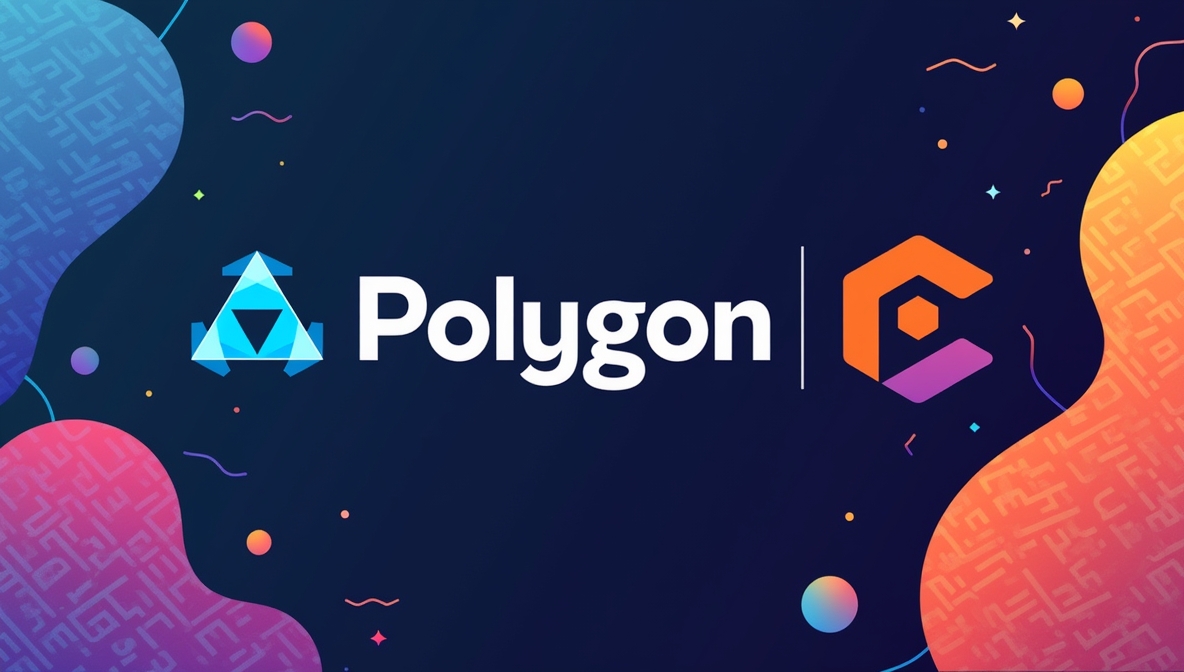Imagine this: you’ve poured your heart and soul into developing a groundbreaking blockchain solution. It’s the kind of innovation that keeps you up at night, buzzing with potential. But then the daunting question hits: how do you actually fund this dream? Or perhaps you’re a seasoned entrepreneur, always on the lookout for disruptive technologies, and you see the immense potential of blockchain but are unsure how to tap into it. Maybe you’ve even witnessed the meteoric rise of some crypto projects and wondered, “Could that be me?”
The world of Initial Coin Offerings (ICOs) has emerged as a powerful and, for many, a more accessible route for innovative projects to secure the necessary capital and cultivate a passionate community. However, let’s be frank, figuring out how to launch an ICO successfully can feel like trying to assemble a complex puzzle with missing pieces. It’s a journey that demands strategic thinking, meticulous execution, and a solid understanding of the ever-evolving crypto landscape.
Launching an ICO involves meticulous planning, legal compliance, and a strong marketing strategy. This guide will walk you through every step to ensure your ICO succeeds. From crafting a compelling whitepaper to building a robust community, we’ll cover the steps to launch an ICO and the ICO launch process in detail.
In 2024, ICOs raised a staggering $8.7 billion globally, signaling a robust recovery and renewed interest in this fundraising model. The average amount raised per ICO was approximately $11.52 million, showcasing the potential for significant capital generation through this method. This growth is driven by advancements in blockchain technology, regulatory clarity, and the increasing sophistication of investors613.
Think of this guide as your comprehensive blueprint. We’ll walk you through the essential steps to launch an ICO, providing you with the knowledge and practical insights needed to confidently navigate this exciting, yet intricate, process. You’ll discover the critical elements of the ICO launch process, from crafting a compelling whitepaper that resonates with your audience to effectively engaging your future community.
Ready to stop just thinking about it and start making it happen? Let’s roll up our sleeves and get started.
Introduction to ICOs
Before we dive into the specifics of launching an ICO, it’s crucial to establish a solid foundation by understanding what an ICO is and why it has become such a significant fundraising mechanism within the blockchain ecosystem. This understanding will provide the necessary context for the subsequent steps.
What is an ICO?
At its core, an Initial Coin Offering (ICO) represents a method of fundraising employed by blockchain-based projects. In essence, the project sells its newly created cryptocurrency tokens to early investors in exchange for capital. Think of it as a digital form of crowdfunding, but instead of receiving equity in a company or traditional rewards, investors receive digital tokens. These tokens can have various utilities, such as granting access to the project’s platform or services, representing a share of future profits (depending on the token’s design and legal framework), or simply acting as a digital asset within the project’s ecosystem. The specific utility and value proposition of the token are key factors that attract potential investors.
Why ICOs are a Popular Fundraising Method
ICOs have gained explosive popularity as a fundraising method within the blockchain space, offering unique advantages over traditional financial structures. Here’s why they’ve become a go-to option for startups and investors alike:
1. Democratized Fundraising
ICOs break down barriers to fundraising by allowing projects to access a global pool of investors. Unlike traditional venture capital, which often involves a select group of institutional investors, ICOs enable anyone with an internet connection to participate. This democratization has opened doors for smaller, innovative projects that might otherwise struggle to secure funding.
For instance, in 2017, Bancor raised $153 million in just three hours through its ICO, showcasing the power of decentralized fundraising. As we look ahead to 2025, ICOs are expected to make a significant comeback, potentially surpassing the $20 billion raised in 2017 due to improved practices and regulatory clarity.
2. Community Building
ICOs foster a strong sense of community from the outset. Early investors often become passionate advocates and active participants in the project’s growth. This engagement is invaluable for long-term success, as the community can provide feedback, support, and even contribute to development.
Take Chainlink (LINK), for instance. Its ICO in 2017 not only raised $32 million (coinlore) but also built a loyal community that has driven its adoption as a leading oracle network. With the anticipated resurgence of ICOs in 2025, community-driven dynamics are expected to play an even more pivotal role in shaping project success.
3. Rapid Capital Acquisition
Compared to traditional fundraising methods, which can be lengthy and complex, ICOs enable projects to raise substantial capital quickly. For example, EOS raised a staggering $4.1 billion over a year-long ICO, making it one of the largest token sales in history. This speed is a major draw for blockchain startups looking to accelerate development and scale operations.
As we approach 2025, the market conditions have matured significantly, allowing for more discerning investment choices. Investors are now prioritizing projects with tangible utility and long-term potential over quick profits.
4. Token Utility and Potential Appreciation
The utility of the token within the project’s ecosystem is a key driver of demand. If the token is essential for accessing the platform, using its services, or participating in governance, it creates inherent value. Additionally, the potential for the token’s value to appreciate over time is a significant incentive for early investors.
For example, early investors in Ethereum’s ICO saw returns of over 100,000% (investopedia) as the project grew into a global blockchain powerhouse. With advancements in blockchain technology and smart contracts expected to enhance tokenomics further by 2025, this aspect will likely become even more appealing vestors.
With these advantages, it’s no wonder ICOs have become a go-to fundraising method. But how did this trend begin? Let’s take a look at the history of ICOs.
Brief History and Evolution of ICOs
The concept of ICOs gained widespread attention in 2017, a period often referred to as the “ICO boom.” During this time, blockchain projects raised billions of dollars, sometimes with little more than a whitepaper outlining their vision. However, this initial surge also attracted scams and poorly executed projects, leading to significant losses for some investors.
Key Milestones in ICO History
2013: Mastercoin (now Omni) launched the first ICO, raising $500,000 to build a protocol layer on top of Bitcoin.
2014: Ethereum’s ICO raised $18 million, laying the foundation for the smart contract revolution.
2017: The ICO boom saw projects like Tezos raising approximately $232 million and Filecoin raising around $257 million (coindesk), both capitalizing on the burgeoning interest in blockchain technology.
2018: Regulatory scrutiny increased significantly, with the SEC cracking down on fraudulent ICOs like Centra Tech, which raised $32 million through false claims (sec). This marked a turning point where regulatory bodies began to take a firmer stance against deceptive practices in the space.
2020-Present: The ICO landscape has matured, with a focus on legitimate projects and compliance with regulations such as the SEC’s Howey Test and GDPR. The emphasis has shifted towards ensuring that fundraising efforts are conducted transparently and ethically.
While the initial hype has subsided, ICOs remain a viable fundraising option for projects with strong fundamentals, a clear value proposition, and a commitment to transparency.As of early 2025, the regulatory environment continues to evolve, with the UK’s Information Commissioner’s Office (ICO) prioritizing children’s data protection online and addressing issues related to artificial intelligence and data privacy.
Now that you understand what an ICO is, why it’s popular, and how it has evolved, it’s time to dive into the steps to launch your own ICO. From pre-launch planning to post-ICO strategies, the next section will guide you through every stage of the process.
Pre-Launch Planning: Setting the Stage for Success
Before even considering the public launch of your ICO, the pre-launch planning phase is absolutely critical. This stage lays the essential groundwork for a successful fundraising campaign and ensures the long-term viability of your project. Think of it as building a solid foundation before constructing a skyscraper; without it, the entire structure is at risk.
Building a Strong Team: The Cornerstone of Your Project
No successful ICO is ever built in isolation. Assembling a skilled, experienced, and dedicated team is unequivocally crucial for navigating the complexities of launching and sustaining a blockchain project. Investors are not just investing in an idea; they are investing in the people who will bring that idea to fruition.
Developers: A team of proficient developers is essential for building the underlying technology, developing secure and efficient smart contracts, and ensuring the technical robustness of your platform. Their expertise will determine the functionality and scalability of your project.
Legal Advisors: Navigating the complex and often ambiguous legal and regulatory landscape surrounding ICOs is paramount. Experienced legal advisors specializing in blockchain and cryptocurrency law can provide invaluable guidance on structuring your token offering, ensuring compliance with relevant regulations (such as securities laws, data privacy regulations, and AML/KYC requirements), and mitigating potential legal risks.
Marketers: A skilled marketing team is crucial for creating awareness about your project, building a strong online presence, engaging with potential investors, and driving participation in your ICO. Their expertise in digital marketing, social media management, content creation, and public relations will be vital for reaching your target audience.
Financial Experts: Managing the funds raised during an ICO responsibly and strategically is essential for the long-term success of your project. Financial experts can help with budgeting, financial planning, and ensuring the transparent and accountable use of funds.
Community Managers: Building and nurturing a strong and engaged community is vital for the success of any ICO. Community managers act as the bridge between the project team and its supporters, fostering communication, addressing queries, and building a sense of belonging.
Conducting Market Research and Competitor Analysis
Before embarking on the journey of launching an ICO, it’s imperative to gain a thorough understanding of your target market and the existing competitive landscape. This research will inform your project’s positioning, value proposition, and overall strategy. Failing to do so is akin to navigating without a map.
Identify the Problem and Your Solution: Clearly define the problem your project aims to solve and articulate your proposed solution. Is there a genuine need for your project, and does your solution offer a unique or significantly improved approach compared to existing alternatives?
Analyze Your Target Audience: Identify your ideal customer or user. Who are they? What are their needs and pain points? Understanding your target audience is crucial for tailoring your marketing efforts and ensuring your product meets their requirements.
Evaluate the Competitive Landscape: Thoroughly research your competitors. Who are they? What are their strengths and weaknesses? What are they doing well, and where are they falling short? Understanding your competition will help you identify opportunities for differentiation and gain a competitive edge.
Determine Your Unique Selling Proposition (USP): Based on your market research and competitor analysis, clearly define your project’s unique selling proposition. What makes your project stand out from the crowd? What unique value do you offer to potential investors and users?
Assess Market Size and Potential: Evaluate the potential market size for your solution. Is there a large enough addressable market to support your project’s growth and long-term sustainability? Understanding the market potential will help you set realistic fundraising goals and demonstrate the viability of your project to investors.
This comprehensive research will serve as the foundation for your whitepaper, inform your marketing strategy, and guide your overall project positioning within the market.
Understanding Legal and Regulatory Requirements
The legal and regulatory landscape surrounding ICOs is constantly evolving and varies significantly across different jurisdictions. Navigating this complex terrain requires careful attention and adherence to applicable laws and regulations. Ignoring these requirements can have severe legal and financial consequences.
Securities Laws: A critical aspect is determining whether your token offering is classified as a security under the laws of relevant jurisdictions (e.g., the Securities Act of 1933 and the Securities Exchange Act of 1934 in the United States). If your token is deemed a security, you will need to comply with stringent regulations, including registration requirements and disclosure obligations. Failure to comply can result in significant penalties.
Data Privacy Regulations: If your project involves the collection and processing of personal data, you must comply with data privacy regulations such as the General Data Protection Regulation (GDPR) in Europe and the California Consumer Privacy Act (CCPA) in California. These regulations mandate specific requirements for data collection, storage, and usage, and failure to comply can lead to substantial fines.
Anti-Money Laundering (AML) and Know Your Customer (KYC) Compliance: To prevent money laundering and the financing of terrorism, it is crucial to implement robust AML and KYC procedures. This involves verifying the identities of your investors and screening transactions for suspicious activity. Compliance with AML/KYC regulations is essential for maintaining the integrity of your ICO and avoiding legal repercussions.
Jurisdictional Considerations: The legal and regulatory requirements for ICOs can vary significantly depending on the jurisdiction in which your project is based and where you are soliciting investors. It is essential to seek legal advice in all relevant jurisdictions to ensure compliance with local laws and regulations.
Laying the Legal Groundwork for Your ICO Launch
Engage experienced legal counsel specializing in blockchain and ICOs early in the planning process. Their expertise will be invaluable in guiding you through the complex regulatory landscape, structuring your token offering to ensure compliance, and mitigating potential legal risks. Investing in legal counsel upfront can save you significant time, resources, and potential legal headaches down the line.
With a strong team, thorough market research, and a clear understanding of legal requirements, you’re ready to move on to the next critical step: crafting a compelling whitepaper. This document will serve as the foundation of your ICO campaign, articulating your vision and attracting potential investors.
Creating a Whitepaper: Your Project’s Definitive Guide
The whitepaper serves as the cornerstone of your ICO campaign. It is a comprehensive and authoritative document that articulates your project’s vision, the underlying technology, the tokenomics, information about your team, and your roadmap for future development and growth. A well-written and compelling whitepaper is absolutely essential for attracting potential investors and building trust in your project’s legitimacy and potential.
Importance of a Whitepaper in an ICO Campaign
The whitepaper plays a multifaceted and crucial role in the success of your ICO campaign. It serves as your project’s primary communication tool with potential investors and the wider community.
Explains the Project in Detail: The whitepaper provides a comprehensive and in-depth explanation of the problem your project aims to solve, your proposed solution, the underlying technology that powers it, and the overall architecture of your platform or ecosystem. It leaves no room for ambiguity and provides a clear understanding of your project’s core functionalities.
Attracts and Educates Investors: A well-crafted whitepaper is a key tool for attracting potential investors and educating them about the merits of your project. It showcases the potential of your solution, highlights its unique value proposition, and convinces investors of its viability and potential for success. It addresses key questions and concerns that investors may have.
Builds Credibility and Trust: A professionally written, well-researched, and technically sound whitepaper is crucial for establishing credibility and building trust with potential investors. It demonstrates your team’s expertise, commitment to the project, and attention to detail. A poorly written or incomplete whitepaper can raise red flags and deter potential investors.
Sets Expectations and Outlines the Roadmap: The whitepaper clearly outlines your project’s goals, key milestones, and the roadmap for future development and growth. This provides investors with a clear understanding of your project’s trajectory and helps manage expectations. It demonstrates a clear vision and a well-defined plan for the future.
Read More: Decoding ICOs: A Simple Guide
Key Sections: Project Vision, Tokenomics, Roadmap, Team Details
A comprehensive and effective whitepaper typically includes the following key sections, each providing essential information for potential investors.
Project Vision and Problem Statement: This section clearly articulates the problem your project aims to solve and presents your innovative solution. It should clearly define the market need and explain how your project addresses it in a unique and compelling way.
Tokenomics: This section provides a detailed explanation of your token’s utility within the ecosystem, its distribution mechanism (including the total supply, allocation to different stakeholders, and vesting schedules), and any mechanisms designed to influence its value, such as burning or staking. A clear and well-defined tokenomics model is crucial for attracting investors.
Technology and Architecture: This section delves into the technical aspects of your project, explaining the underlying technology, the specific blockchain platform you have chosen (e.g., Ethereum, Solana, Polkadot), the functionality of your smart contracts, and any other relevant technical details. This section should demonstrate the technical feasibility and robustness of your project.
Roadmap: The roadmap outlines the key milestones and timelines for your project’s development, launch, and future growth. It provides a visual representation of your project’s trajectory and helps investors understand the planned stages of development and anticipated timelines.
Team: This section introduces your team members, highlighting their relevant experience, expertise, and qualifications. Providing detailed information about your team’s background and accomplishments builds confidence in their ability to execute the project successfully.
Market Analysis: This section presents your research on the target market, the competitive landscape, and the potential market size for your solution. It demonstrates your understanding of the market dynamics and the potential for your project to gain traction and achieve adoption.
Use of Funds: This section clearly explains how the capital raised during the ICO will be allocated to different aspects of the project, such as development, marketing, operations, and legal expenses. Transparency in the use of funds is crucial for building trust with investors.
Legal Disclaimer: This section includes the necessary legal disclaimers and clearly outlines the risks associated with investing in your project. It is essential to be transparent about the potential risks involved.
Tips for Writing a Clear, Concise, and Compelling Whitepaper
Crafting a whitepaper that effectively communicates your project’s vision and attracts potential investors requires careful planning and execution.
Be Clear and Concise: Use clear, straightforward language and avoid unnecessary technical jargon. Aim for clarity and ensure that your whitepaper is easily understandable by a broad audience, including those who may not have deep technical expertise.
Focus on the Problem and Solution: Clearly articulate the problem you are addressing and how your proposed solution effectively solves it. Emphasize the benefits and advantages of your approach compared to existing alternatives.
Highlight the Value Proposition: Clearly articulate the unique value proposition of your project and the benefits it offers to potential investors and users. What makes your project stand out, and why should someone invest in it?
Use Visuals Effectively: Incorporate diagrams, charts, graphs, and infographics to visually represent complex information and make your whitepaper more engaging and easier to understand. Visual aids can significantly enhance comprehension.
Read More: Security Token Offerings (STOs)
Proofread Meticulously: Ensure your whitepaper is free of grammatical errors, typos, and inconsistencies. A polished and error-free whitepaper demonstrates professionalism and attention to detail.
Seek Feedback and Iterate: Share your whitepaper with trusted advisors, industry experts, and potential investors to gather feedback and identify areas for improvement. Be prepared to iterate and refine your whitepaper based on the feedback you receive.
For example, Consider the whitepaper of Chainlink. It provides a clear and concise explanation of the oracle problem in the blockchain space and presents a well-defined and technically sound solution, which has been instrumental in its success and widespread adoption.
Now that you understand the importance of a whitepaper and how to craft one, it’s time to dive into the next critical step: token development. From choosing the right blockchain platform to ensuring security, the next section will guide you through the process of creating your digital asset.
Token Development: Creating Your Digital Asset
Developing your token is a critical step in the ICO launch process. This involves selecting the appropriate blockchain platform, developing the smart contract that governs your token’s functionality, and ensuring its security and reliability. This is where your vision starts to take a tangible, digital form.
Choosing the Right Blockchain Platform
Selecting the appropriate blockchain platform for your token is a crucial decision that will impact your project’s capabilities, scalability, and cost. Several platforms are popular choices for launching ICOs, each with its own unique characteristics.
Ethereum: Ethereum is the most widely used blockchain platform for launching ICOs and creating decentralized applications (dApps). It offers robust smart contract capabilities, a large and active developer community, and a well-established ecosystem of tools and resources. The ERC-20 token standard on Ethereum is the most widely adopted standard for fungible tokens.
Solana: Solana is a high-performance blockchain platform known for its incredibly fast transaction speeds and low transaction fees. It is gaining popularity for projects that require high throughput and scalability.
Binance Smart Chain (now BNB Chain): BNB Chain offers lower transaction fees compared to Ethereum and provides interoperability with the extensive Binance ecosystem. The BEP-20 token standard is the equivalent of ERC-20 on BNB Chain.
Other Platforms: Other blockchain platforms, such as Polkadot, Cardano, and EOS, also offer smart contract capabilities and may be suitable for specific project requirements.
When choosing a blockchain platform, consider factors like transaction speed, cost, developer community size, and ecosystem support. For instance, Ethereum is ideal for projects requiring a robust ecosystem, while Solana is better suited for high-speed applications.
Smart Contract Development and Token Standards
Smart contracts are self-executing contracts with the terms of the agreement directly written into code. They automatically execute when predetermined conditions are met, ensuring transparency and trust in token transactions and other on-chain interactions. Common token standards include:
ERC-20 (Ethereum): The ERC-20 standard is the most widely adopted standard for creating fungible tokens on the Ethereum blockchain. It defines a common set of rules and functions that all ERC-20 tokens must adhere to, ensuring interoperability and ease of integration with wallets and exchanges.
BEP-20 (BNB Chain): The BEP-20 standard is the equivalent of ERC-20 on the BNB Chain. It provides similar functionality and interoperability within the BNB Chain ecosystem.
Non-Fungible Token (NFT) Standards: For projects involving unique, indivisible digital assets, NFT standards such as ERC-721 (Ethereum) and ERC-1155 (Ethereum) are used.
When developing smart contracts, ensure they are optimized for gas efficiency and security. Use established libraries like OpenZeppelin to reduce the risk of vulnerabilities.
Importance of Security Audits and Testing
Smart contracts, while offering numerous advantages, are also susceptible to security vulnerabilities if not developed and tested rigorously. Before launching your ICO and deploying your smart contracts on the blockchain, it is absolutely essential to conduct thorough security audits performed by reputable third-party security firms. These audits involve a comprehensive review of your smart contract code to identify potential flaws, vulnerabilities, and security risks. Addressing these issues before launch is paramount for protecting investor funds and maintaining the integrity of your project.
Invest in bug bounty programs to leverage the hacker community for identifying vulnerabilities. Platforms like Immunefi have rewarded ethical hackers with over $65 million for discovering critical issues.
Prioritizing Smart Contract Security for a Successful Launch
Investing in comprehensive security audits from reputable and experienced blockchain security firms is a non-negotiable step in the ICO launch process. This demonstrates your commitment to security and provides a crucial layer of protection for your investors and your project’s reputation. Think of it as an insurance policy against potential exploits and vulnerabilities.
To further enhance your security measures, leverage AI-driven tools like CertiK, which use advanced AI algorithms to identify vulnerabilities with 96% accuracy (coinlaw), significantly improving audit efficiency. These tools not only streamline the auditing process but also provide actionable insights to strengthen your smart contracts..
Now that you’ve learned how to develop your token from choosing the right blockchain platform to ensuring smart contract security it’s time to focus on the next critical phase: marketing and community building. A well-developed token is only as valuable as the community that supports it. In the next section, we’ll explore proven strategies to build a strong online presence, engage with your audience, and create buzz around your ICO. From collaborating with influencers to executing pre-sale campaigns, these steps will help you attract the right investors and set the stage for a successful launch. Let’s dive in!
Marketing and Community Building
A successful ICO requires a well-defined and effectively executed marketing strategy to reach potential investors, generate interest in your project, and cultivate a strong and engaged community around your vision. Even the most innovative project needs a robust marketing engine to gain traction and attract the necessary support.
Building a Strong Online Presence: Your Digital Footprint
Establishing a strong and consistent online presence is fundamental for increasing your project’s visibility, building brand awareness, and fostering engagement with your target audience. Your online presence serves as the primary point of contact for potential investors and community members.
Professional Website: A well-designed, informative, and user-friendly website is the central hub for your project’s online presence. It should clearly articulate your project’s vision, value proposition, team, roadmap, and tokenomics. Ensure your website is mobile-friendly, easy to navigate, and provides all the essential information potential investors need.
Active Social Media Channels: Engage with your community and potential investors on relevant social media platforms such as Twitter, Telegram, Discord, Medium, and LinkedIn. Each platform serves a different purpose, so tailor your content and engagement strategy accordingly. Consistent and engaging social media activity is crucial for building a strong online community.
Content Marketing Strategy: Develop a comprehensive content marketing strategy that includes creating valuable and informative content such as blog posts, articles, whitepaper summaries, explainer videos, infographics, and podcasts. This content should educate your audience about your project, the problem you are solving, and the benefits of your solution. High-quality content can attract potential investors and establish your project as a thought leader in the space.
High-quality content can attract potential investors and establish your project as a thought leader in the space. For example, Filecoin’s detailed whitepaper and educational content helped it raise $257 million in its ICO.
Collaborating with Influencers and Crypto Communities
Partnering with relevant influencers in the cryptocurrency and blockchain space can significantly amplify your project’s reach, boost its credibility, and generate buzz. Influencer marketing and community engagement are powerful tools for reaching your target audience.
1. Influencer Partnerships
Collaborate with influencers who have a genuine interest in blockchain technology and a following that aligns with your target audience. Micro-influencers, with smaller but highly engaged audiences, can be particularly effective. Host Ask Me Anything (AMA) sessions with influencers to provide transparency and answer potential investors’ questions.
2. Engaging Crypto Communities
Actively engage with established crypto communities on platforms like Reddit, BitcoinTalk, and Discord. Participate in discussions, share updates, and build credibility by providing value. For example, projects like Bancor have successfully leveraged BitcoinTalk forums to build early traction.
Strategies for Pre-Sale and Private Sale Campaigns
Offering pre-sale and private sale opportunities to early supporters and strategic investors can be an effective way to generate initial momentum, reward early believers, and secure funding before the public ICO launch. These sales often offer discounted token prices or exclusive benefits to incentivize early participation.
1. Early Access and Exclusivity
Create a sense of exclusivity by offering early access to your token sale. This taps into the fear of missing out (FOMO) and encourages potential investors to participate early. For example, Binance’s ICO offered early-bird discounts, contributing to its massive success.
2. Whitelisting and KYC
Implement a whitelisting process to ensure only serious investors participate in the pre-sale. Combine this with KYC (Know Your Customer) procedures to comply with regulations and build trust.
Emotional Triggers and Community Engagement
Creating emotional connections with your audience is key to building a loyal community. Use storytelling to highlight your project’s mission and vision. For example, Ethereum’s narrative of revolutionizing smart contracts resonated deeply with investors, driving its success.
1. Gamification
Incorporate gamification into your marketing strategy to boost engagement. For example, offer rewards for completing tasks like sharing your project on social media or participating in quizzes. Research shows gamified campaigns can increase engagement by 60% (spinify).
2. Transparency and Trust
Maintain transparency throughout your campaign by providing regular updates, hosting AMA sessions, and sharing progress reports. This builds trust and keeps your community engaged.
In 2025, ICO marketing is more dynamic and competitive than ever. By building a strong online presence, collaborating with influencers, and leveraging emotional triggers, you can create a successful ICO campaign that stands out in the crowded crypto space. Remember, the key to success lies in transparency, community engagement, and delivering on your promises.
With a strong marketing strategy in place and a growing community behind your project, you’re now ready to take the next step: launching your ICO. This is where all your planning and preparation come together, and the success of your public offering will depend on how well you execute this phase. Let’s explore how to set up a secure and user-friendly ICO platform, manage token distribution, and ensure transparency throughout the process.
Launching the ICO: The Public Offering
The ICO launch is the culmination of all your planning and preparation. This is the moment when you publicly offer your tokens for sale to the wider community. Successful execution during this phase is critical for achieving your fundraising goals and setting the stage for your project’s future
Setting up a Secure and User-Friendly ICO Platform
Choosing a reliable, secure, and user-friendly ICO platform is paramount for providing a seamless and trustworthy experience for your investors. The platform you select will directly impact investor participation and the overall success of your token sale.
- KYC/AML Integration: Ensure the platform integrates robust Know Your Customer (KYC) and Anti-Money Laundering (AML) procedures to comply with regulatory requirements and prevent illicit activities. A seamless KYC/AML process is crucial for attracting legitimate investors.
- Secure Payment Gateways: The platform should offer secure and reliable payment gateways to facilitate smooth and secure transactions for investors using various cryptocurrencies or fiat currencies.
- User-Friendly Interface: The platform should have an intuitive and easy-to-navigate user interface to ensure a positive experience for investors participating in the token sale. A clunky or confusing platform can deter potential participants.
- Robust Security Measures: The platform must implement robust security measures to protect investor funds and sensitive data from potential cyber threats and attacks. Security is a top priority for any ICO platform.
Managing Token Distribution and Investor Communication
Transparency and clear communication are absolutely essential during the ICO launch. Clearly communicate the token distribution process, including the timeline, allocation details, and any vesting schedules. Keep investors informed about the progress of the sale, any updates, and important announcements.
Ensuring Transparency and Trust Throughout the Process
Maintaining open, honest, and consistent communication with your community is crucial for building trust and fostering a strong relationship with your investors. Address any concerns or queries promptly and transparently. Be upfront about your progress, challenges, and any unforeseen circumstances. Transparency is the cornerstone of trust in the cryptocurrency space.
Post-ICO Strategies: Building for the Long Term
The completion of the ICO launch is not the end of the journey; it is merely the beginning of the next phase. Sustained success requires a well-defined and diligently executed post-ICO strategy focused on long-term growth, community engagement, and delivering on the promises outlined in your whitepaper.
Listing Tokens on Exchanges (CEX and DEX)
Listing your token on reputable cryptocurrency exchanges, both centralized (CEX) and decentralized (DEX), is a crucial step for increasing its liquidity, accessibility, and visibility to a wider audience of potential traders and investors. Exchange listings can significantly impact the token’s price and trading volume.
Maintaining Community Engagement and Delivering on Promises
Continue to actively engage with your community through regular updates, announcements, and open communication channels. Most importantly, focus on delivering on the promises and milestones outlined in your whitepaper. Building a strong and loyal community requires consistent effort and a commitment to your project’s vision.
Tracking Progress and Updating Stakeholders
Regularly track your project’s progress against the roadmap you established and keep your stakeholders informed through consistent updates, progress reports, and community meetings. Transparency in your progress builds confidence and reinforces trust in your project’s ability to execute its plans.
Consistent communication, demonstrable progress, and delivering on your commitments are the cornerstones of building long-term value and fostering a thriving community around your project.
Launch Your ICO with Confidence
Navigating the complexities of an ICO? Tokenova is here to guide you. From regulatory compliance to tokenomics design and community building, our expert consultants provide end-to-end support to ensure your ICO’s success.
Why Tokenova?
- Tailored Strategies: Custom solutions for your project’s unique needs.
- Regulatory Expertise: Stay compliant with global ICO regulations.
- Proven Results: Trusted by projects that have raised millions.
Let’s Build Your Legacy Together
Ready to take the next step? Visit www.tokenova.co to schedule a free consultation. Your vision, our expertise let’s make it happen.
Conclusion
Launching an ICO is undoubtedly a complex and challenging undertaking, but it also presents a significant opportunity for innovative projects to secure funding and build a passionate community. By meticulously planning each stage of the process, assembling a skilled and dedicated team, crafting a compelling whitepaper that clearly articulates your vision, and actively engaging with your community, you can significantly increase your chances of a successful launch.
Remember that transparency, consistent communication, and a steadfast commitment to delivering on your promises are paramount for building trust and ensuring the long-term viability of your project in the dynamic and ever-evolving world of cryptocurrency. This comprehensive guide to launching an ICO provides you with a detailed roadmap, but continuous learning, adaptation, and a commitment to excellence are essential for navigating this exciting and transformative landscape.
Key Takeaways
- Plan Thoroughly: Success starts with a solid foundation. Assemble a skilled team, conduct market research, and ensure legal compliance.
- Craft a Compelling Whitepaper: Your whitepaper is your project’s blueprint. Make it clear, concise, and convincing.
- Prioritize Security: Protect your project and investors with robust security measures and thorough smart contract audits.
- Build a Strong Community: Engage your audience early and often. A loyal community is your greatest asset.
- Stay Transparent: Honesty and open communication build trust and credibility with investors.
- Focus on Post-ICO Growth: Listing tokens on exchanges and maintaining community engagement are critical for long-term success.
What are the most significant risks associated with investing in an ICO?
Investing in Initial Coin Offerings (ICOs) carries substantial risks that potential investors should carefully consider. These risks include the possibility of fraudulent schemes or “rug pulls,” where project founders abscond with investor funds. There’s also the risk of project failure due to a lack of technical development, market adoption, or unforeseen challenges. Furthermore, the value of ICO tokens can be highly volatile and subject to significant price swings, potentially leading to substantial financial losses for investors. Regulatory uncertainty surrounding ICOs in various jurisdictions also adds another layer of risk. Thorough due diligence and a clear understanding of these risks are paramount before investing in any ICO.
How can I ensure my ICO attracts legitimate investors and effectively avoids attracting bots or malicious actors?
To attract genuine investors and mitigate the risk of attracting bots or malicious actors, implementing robust Know Your Customer (KYC) and Anti-Money Laundering (AML) procedures is absolutely essential. This involves verifying the identities of potential investors and screening them against sanctions lists. Setting realistic fundraising goals and avoiding overly aggressive or misleading marketing tactics can also help attract investors who are genuinely interested in your project’s long-term potential rather than those seeking quick profits or engaging in illicit activities. Building relationships with reputable cryptocurrency communities and seeking endorsements from trusted figures in the industry can further enhance your project’s credibility and attract legitimate investors.
What are some of the most common mistakes to avoid when launching an ICO?
Several common pitfalls can hinder the success of an ICO launch. These include inadequate legal preparation and a failure to comply with relevant regulations, which can lead to legal repercussions. A poorly written or unconvincing whitepaper that fails to clearly articulate the project’s vision and value proposition is another significant mistake. Insufficient marketing efforts and a lack of community engagement can result in low investor participation. Making unrealistic promises or guarantees about future returns is also a major red flag. Furthermore, neglecting to conduct thorough security audits of smart contracts can leave the project vulnerable to exploits. Finally, a lack of a well-defined post-ICO strategy for continued development and community engagement can lead to a decline in investor interest and project stagnation.












